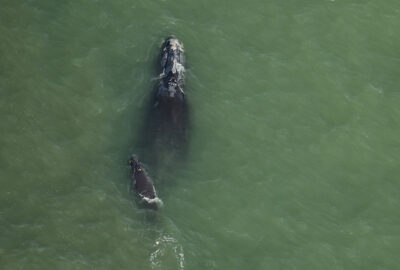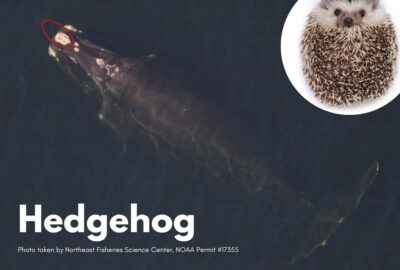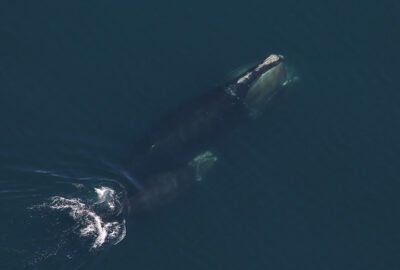Abstract
The critically endangered North Atlantic right whale (Eubalaena glacialis) faces significant anthropogenic mortality. Recent climatic shifts in traditional habitats have caused abrupt changes in right whale distributions, challenging traditional conservation strategies. Tools that can help anticipate new areas where E. glacialis might forage could inform proactive management. In this study, we trained boosted regression tree algorithms with fine-resolution modeled environmental covariates to build prey copepod (Calanus) species-specific models of historical and future distributions of E. glacialis foraging habitat on the Northwest Atlantic Shelf, from the Mid-Atlantic Bight to the Labrador Shelf. We determined foraging suitability using E. glacialis foraging thresholds for Calanus spp. adjusted by a bathymetry-dependent bioenergetic correction factor based on known foraging behavior constraints. Models were then projected to 2046–2065 and 2066–2085 modeled climatologies for representative concentration pathway scenarios RCP 4.5 and RCP 8.5 with the goal of identifying potential shifts in foraging habitat. The models had generally high performance (area under the receiver operating characteristic curve > 0.9) and indicated ocean bottom conditions and bathymetry as important covariates. Historical (1990–2015) projections aligned with known areas of high foraging habitat suitability as well as potential suitable areas on the Labrador Shelf. Future projections suggested that the suitability of potential foraging habitat would decrease in parts of the Gulf of Maine and southwestern Gulf of Saint Lawrence, while potential habitat would be maintained or improved on the western Scotian Shelf, in the Bay of Fundy, on the Newfoundland and Labrador shelves, and at some locations along the continental shelf breaks. Overall, suitable habitat is projected to decline. Directing some survey efforts toward emerging potential foraging habitats can enable conservation management to anticipate the type of distribution shifts that have led to high mortality in the past.
Full Text






